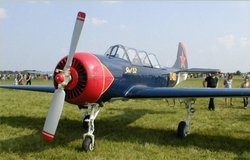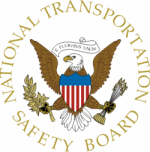Witnesses "Did Not Perceive Any Change In Pitch" Prior To
Impact
Preliminary information in an accident which occurred during an
airshow in Flagler Beach, FL, in March has been released by the
NTSB. The plane was part of an aerobatic team which was performing
a "heart" maneuver when the plane failed to recover and impacted
the ground, fatally injuring the pilot.

Yak-52 File Photo
NTSB Identification: ERA11FA214
14 CFR Part 91: General Aviation
Accident occurred Saturday, March 26, 2011 in Palm Coast, FL
Aircraft: AEROSTAR S A YAK-52, registration: N808TD
Injuries: 1 Fatal.
This is preliminary information, subject to change, and may
contain errors. Any errors in this report will be corrected when
the final report has been completed.
On March 26, 2011, about 1637 eastern daylight time, an Aerostar
S.A. Yak-52, N808TD, registered to and operated by a private
individual, doing business as Walker Brothers Aircraft, collided
with terrain during an aerobatic flight at Flagler County Airport
(XFL), Palm Coast, Florida. The air show flight was operated under
the provisions of 14 Code of Federal Regulations Part 91, and no
flight plan filed. Visual meteorological conditions prevailed. The
commercial pilot was killed and the airplane was destroyed by
impact and a postcrash fire. The flight departed from XFL about 10
minutes earlier.
The pilot who was performing aerobatics with the accident pilot
and who was flying in the right wing position reported he, the
accident pilot (lead pilot), and the pilot’s of two other
airplanes were performing an aerial routine that was pre-briefed.
He and the accident pilot were the only two pilots performing
aerobatic maneuvers, and he reported that at the completion of one
maneuver (heart) while crossing at the bottom of the maneuver, the
accident pilot was to pull up to perform a loop, while he was to
pull up and do a Half Cuban Eight maneuver. While at the top of the
Half Cuban Eight maneuver, he had visual with the accident pilot
and at that time all appeared normal. As he completed the half roll
he saw the accident flight in a position that was not expected. He
broadcast the first name of the accident pilot on the air-to-air
frequency they were using but there was no response. He then
broadcast on the frequency to “knock it off” and
expected all to stop maneuvers and to re-group; again there was no
response from the accident pilot. He then heard on the frequency
“no, no, no”, and he returned for landing. While on
base to final he noted smoke from the crash site, and he landed
uneventfully.

The pilot of another airplane who was flying at the same time as
part of the aerial routine reported that after completion of the
heart maneuver, the accident pilot and the right wing position
pilot flew vertical with the accident pilot to perform a loop and
the right wing position pilot to perform a Half Cuban Eight. The
pilot further reported that he next saw the accident pilot’s
airplane was upright in an approximately 45 degree down line angle
flying down runway 24. The accident airplane continued on the same
line of flight until impact. He initially reported he did not
detect any deviation during the last 300 feet of the descent.
Witnesses on the ground who witnessed the accident reported
seeing the airplane continue descending during one aerobatic
maneuver. The witnesses did not perceive any change in pitch down
attitude from the top of the maneuver until losing sight just
before impact.
The accident site was located on airport property. A ground scar
associated with the right wing was oriented on a magnetic heading
of 124 degrees. A ground crater consisting of piled up dirt was
located 28 feet from the right wingtip location. Pieces of the
propeller blades were found between the right wingtip location and
the piled up dirt mound. The main wreckage which was heat damaged
was located 74 feet from the right wingtip location, or 46 feet
from the dirt mound to the center of the resting position of the
cockpit. The fuselage from the cockpit to the empennage, and
sections of both wings was nearly consumed from the postcrash
fire.
 OSH25 Day Four Redux: Spirit SE-1!, H55 eFlyer, King Schools
OSH25 Day Four Redux: Spirit SE-1!, H55 eFlyer, King Schools ANN Thanks Our Speedy Sponsor... Blackshape!!!
ANN Thanks Our Speedy Sponsor... Blackshape!!! Alpha Systems AOA Guides ANN Oshkosh Coverage
Alpha Systems AOA Guides ANN Oshkosh Coverage Pilot Mall Intro's High Flying Models To ANN Sponsor Lineup
Pilot Mall Intro's High Flying Models To ANN Sponsor Lineup CiES Fuels ANN's Oshkosh 2025 Special Event Coverage
CiES Fuels ANN's Oshkosh 2025 Special Event Coverage




